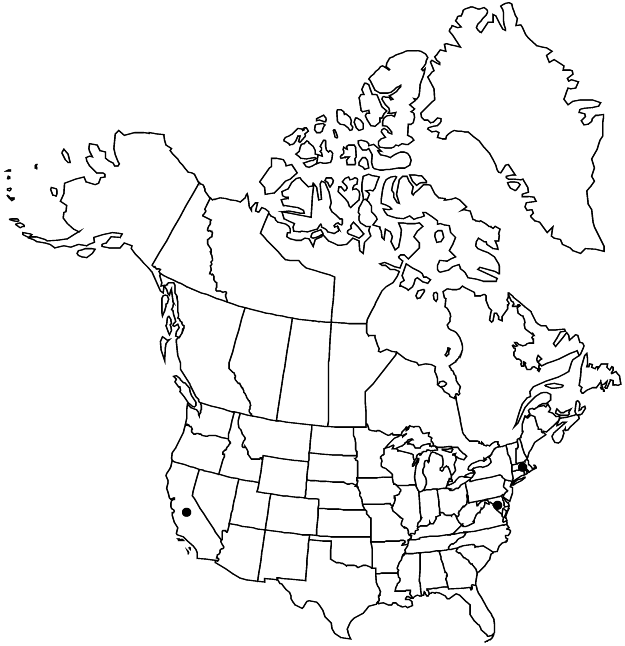Difference between revisions of "Herniaria hirsuta var. hirsuta"
Treatment appears in FNA Volume 5. Treatment on page 44.
FNA>Volume Importer |
FNA>Volume Importer |
||
| Line 19: | Line 19: | ||
|elevation=200-1800 m | |elevation=200-1800 m | ||
|distribution=Calif.;Md.;Mass.;s Europe;sw Asia;n Africa. | |distribution=Calif.;Md.;Mass.;s Europe;sw Asia;n Africa. | ||
| − | |discussion=<p>Variety hirsuta is apparently much less common than var. cinerea in North America. A historical record exists from Pennsylvania (1915).</p> | + | |discussion=<p>Variety hirsuta is apparently much less common than <i></i>var.<i> cinerea</i> in North America. A historical record exists from Pennsylvania (1915).</p> |
|tables= | |tables= | ||
|references= | |references= | ||
| Line 44: | Line 44: | ||
|publication year= | |publication year= | ||
|special status= | |special status= | ||
| − | |source xml=https://jpend@bitbucket.org/aafc-mbb/fna-data-curation.git/src/ | + | |source xml=https://jpend@bitbucket.org/aafc-mbb/fna-data-curation.git/src/8f726806613d60c220dc4493de13607dd3150896/coarse_grained_fna_xml/V5/V5_88.xml |
|subfamily=Caryophyllaceae subfam. Paronychioideae | |subfamily=Caryophyllaceae subfam. Paronychioideae | ||
|genus=Herniaria | |genus=Herniaria | ||
Revision as of 18:41, 18 September 2019
Stems 4–15 cm. Inflorescences 3–6-flowered. Flowers 0.9–1 mm, hairs mostly of 1 size, 1/5–1/3 as long as sepals, tips of hairs ± straight; hypanthium glabrous or pubescent, tips of hairs ± straight; sepals in fruit ± equal; stamens usually 5; styles connate in proximal 1/3, 2-branched, shorter than 0.1 mm. Seeds 0.6–0.7 mm. 2n = 18, 36 (Europe).
Phenology: Flowering spring–fall.
Habitat: Sandy flats, roadsides, woodlands
Elevation: 200-1800 m
Distribution

Calif., Md., Mass., s Europe, sw Asia, n Africa.
Discussion
Variety hirsuta is apparently much less common than var. cinerea in North America. A historical record exists from Pennsylvania (1915).
Selected References
None.
Lower Taxa
None.